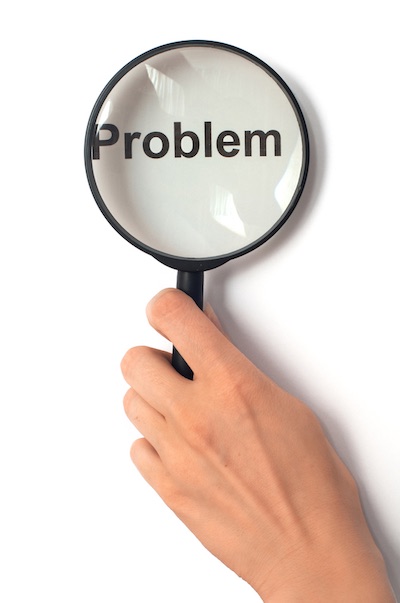“The [so-called lead compound rule] is in tension with other aspects of obviousness jurisprudence as set forth in decisions of the Federal Circuit itself.”
 On August 22, 2023, the U.S. Court of Appeals for the Federal Circuit issued yet another decision reinforcing what can only be described as the “lead compound” rule for challenging pharmaceutical and other chemical compound patents on the basis of obviousness. As the court stated in Sun Pharm. Indus., Inc. v. Incyte, Inc.:
On August 22, 2023, the U.S. Court of Appeals for the Federal Circuit issued yet another decision reinforcing what can only be described as the “lead compound” rule for challenging pharmaceutical and other chemical compound patents on the basis of obviousness. As the court stated in Sun Pharm. Indus., Inc. v. Incyte, Inc.:
“For a new chemical compound, we apply a two-step test. First, the court determines whether a chemist of ordinary skill would have selected the asserted prior art compounds as lead compounds, or starting points, for further development efforts. The second inquiry in the analysis is whether the prior art would have supplied one of ordinary skill in the art with a reason or motivation to modify a lead compound to make the claimed compound with a reasonable expectation of success.”
2023 WL 5370639 at *4 (Fed. Cir. Aug. 22, 2023)(nonprecedential).
The Federal Circuit has been utilizing the “lead compound” construct since around 2000. The Sun panel cited an earlier decision which couched the construct as something the court “ordinarily” employs. Otsuka Pharm. Co., Ltd. v. Sandoz Inc., 678 F. 3d 1280, 1289 (Fed. Cir. 2012). That earlier decision cited yet an earlier decision which stated that the “lead compound” methodology is used “in general.” Esai Co. v. Dr. Reddy’s Labs., Ltd., 533 F. 3d 1353, 1359 (Fed. Cir. 2008).
Yet this author is unaware of any instance in which the Federal Circuit has provided a legal rationale for using the lead compound analysis, or where its use was seriously challenged. Thus, after nearly a quarter century, and given the court’s recent use of “we apply” in Sun, it is difficult to dispute the notion that the “lead compound” construct has hardened into a bona fide Federal Circuit rule.
In an October 2023 article for another publication, the present author advanced the view that the “lead compound” requirement for challenging pharmaceutical patents based on obviousness was legally wrong, finding no basis in the statute, 35 U.S.C. §103(a), or in Supreme Court jurisprudence, as well as the rule contravening public policy. Wepner, Lead Compound Rule for Drug Patents Leads Courts Astray (IPLaw 360, Oct. 6, 2023). Among other points made therein, the rule often prevents obviousness from being challenged with the closest prior art; it effectively removes obvious variations of prior art compounds from the public domain; and it amounts to the type of special rule that the Supreme Court prohibited in KSR Int’l Co. v. Teleflex Inc., 550 U.S. 398 (2007).
But those are not the only problems with the “lead compound” rule. This article explores certain others. As demonstrated herein, the rule is in tension with other aspects of obviousness jurisprudence as set forth in decisions of the Federal Circuit itself.
The Best Is Not the Only
In Otsuka , , the Federal Circuit explained that a “lead compound” is “a compound in the prior art that would be most promising to modify in order to improve upon its activity and obtain a compound with better activity,” i.e. “a natural choice for further development efforts.” Id. at 1291. In other words, a challenger must focus its obviousness defense on a reference which, if combined with other teachings, would appear most likely to result in a new compound at least as effective as existing compounds, if not more effective.
One further problem with this approach is that it runs afoul of principles expressed in In re Fulton, 391 F. 3d 1195 (Fed. Cir. 2004). Fulton was an ex parte appeal from a rejection of patent claims directed to a shoe sole with increased traction. The USPTO had relied upon a reference known as “Pope” for its teaching of a key claim limitation. The appellant had argued to the Federal Circuit that the characteristics in Pope had not been shown to be preferred over other alternatives disclosed in the prior art.
The Federal Circuit disagreed:
“This argument fails because our case law does not require that a particular combination must be the preferred, or the most desirable, combination described in the prior art in order to provide motivation for the current invention.”
Id. at 1200.The court added that the issue “is not whether there is something in the prior art as a whole to suggest that the combination is the most desirable combination available.” Id. (emphasis in original). And, lest there be any misunderstanding, the court squarely held:
“[A] finding that the prior art as a whole suggests the desirability of a particular combination need not be supported by a finding that the prior art suggests that the combination claimed by the patent applicant is the preferred, or most desirable, combination.”
Id.
In full effect, and contrary to Fulton, the lead compound rule forces challengers to prove obviousness with references that would be expected to yield a preferred or even the most desirable compound. Fulton tells us that an obviousness defense can prevail on the merits if the prior art supporting that defense results in a compound within the claimed invention that is neither preferred nor most desirable; but the lead compound rule prevents challengers from even proceeding without a prior art compound that has success written all over it.
A Lead Compound Is Not a Contrary Teaching
At first glance, the lead compound rule seems to have some sort of kinship with the notion of a reference in the prior art “teaching away” from the claimed invention. But they are very different creatures.
“A reference may be said to teach away when a person of ordinary skill, upon reading the reference, would be discouraged from following the path set out in the reference, or would be led in a direction divergent from the path that was taken by the [patentee]. A reference does not teach away, however, if it merely expresses a general preference for an alternative invention but does not criticize, discredit, or otherwise discourage investigation into the invention claimed.”
DePuy Spine, Inc. v. Medtronic Sofamor Danek, Inc., 567 F. 3d 1314, 1327 (Fed. Cir. 2009).
The fact that a prior art reference “teaches away” from a claimed invention is typically treated as evidence which may rebut a prima facie case of obviousness and which must be properly weighed. See, e.g. In re Gurley, 27 F. 3d 551, 553 (Fed. Cir. 1994) (“Although a reference that teaches away is a significant factor to be considered in determining unobviousness, the nature of the teaching is highly relevant, and must be weighed in substance.”); see also In re Dow Chemical Co., 837 F. 2d 469, 473 (Fed. Cir. 1988) (“Evidence that supports, rather than negates, patentability must be fairly considered.”)
In contrast, there is no requirement that a lead compound must criticize or discredit other, lesser prior art compounds.
We thus are faced with this anomaly: a so-called lead compound in the prior art which does not discredit or disparage a different compound relied upon by a challenger is not even a contrary teaching which may negate obviousness on the merits. But that same lead compound can block the consideration of the challenger’s chosen compound altogether.
The Prior Art as a Less-Than-Whole
For at least half a century, the Federal Circuit and its predecessor have repeatedly made clear that the obviousness inquiry is directed to the prior art as a whole. See, e.g., Cochlear Bone Anchored Solutions AB v. Oticon Medical AB, 958 F. 3d 1348, 1361 (Fed. Cir. 2020) (“The proper analytic method is to determine obviousness of the invention as a whole and the claims as a whole in light of the prior art as a whole.”); EWP Corp. v. Reliance Universal Inc., 755 F. 2d 898, 907 (Fed. Cir. 1985) (“On the issue of obviousness, the combined teachings of the prior art as a whole must be considered.”); In re Langer, 465 F. 2d 896, 899 (C.C.P.A. 1972). (“In effect, we compare the prior art ‘as a whole’ with the claimed subject matter ‘as a whole.’”) In the Manual of Patent Examining Procedures, the U.S. Patent and Trademark Office (USPTO) repeatedly instructs patent examiners to consider the prior art as a whole in evaluating obviousness. See, e.g., MPEP §§ 2141 (II) B, 2143.01 (I) (citing Fulton, 391 F. 3d at 1200-01), 2144 (II) (9th ed. Feb. 2023).
The lead compound requirement forces litigants and courts to address obviousness without the benefit of the prior art as a whole. Excluded from their consideration are prior art compounds which do not measure up as most promising vis-à-vis activity. But such excluded compounds may well include those that are structurally most similar to the patented compound. Daiichi Sankyo Co., Ltd. v. Matrix Labs, Ltd., 619 F. 3d 1346, 1354 (Fed. Cir. 2010).
Whose Statute Is It Anyway?
A rule which sometimes precludes consideration of the closest prior art would seem anathema to those who practice in other spaces, such as design patents. In that arena, under the Durling/Rosen rule, to invalidate a design patent for obviousness, the challenger must first find a reference with design characteristics which are “basically the same as the claimed design.” Durling v. Spectrum Furniture Co., Inc., 101 F. 3d 100, 103 (Fed. Cir. 1996) (quoting In re Rosen, 673 F. 2d 388, 391 (C.C.P.A. 1982)).
As noted above, this author has expressed the view that the lead compound rule is the type of “rigid rule” rejected by the Supreme Court in KSR. And the Federal Circuit recently agreed to rehear a design patent case en banc to decide, inter alia, whether KSR overruled Durling and Rosen. LKQ Corp. v. GM Global Operations LLC, 71 F. 4th 1383 (Fed. Cir. 2023)(en banc).
Given that pharmaceutical patent cases and design patent cases are governed by the same obviousness statute, 35 U. S. C. §103(a), it hard to imagine that the lead compound rule and the Durling/Rosen rule can both be correct. While the Durling/Rosen rule is beyond the scope of this article (to its credit, it requires that obviousness be measured against the closest prior art, though it comes close to requiring anticipation to prove obviousness), the lead compound rule should not stand.
Image Source: Deposit Photos
Author: merzavka
Image ID: 12839202

![[IPWatchdog Logo]](https://ipwatchdog.com/wp-content/themes/IPWatchdog%20-%202023/assets/images/temp/logo-small@2x.png)

![[Advertisement]](https://ipwatchdog.com/wp-content/uploads/2024/04/UnitedLex-May-2-2024-sidebar-700x500-1.jpg)
![[Advertisement]](https://ipwatchdog.com/wp-content/uploads/2024/05/Quartz-IP-May-9-2024-sidebar-700x500-1.jpg)
![[Advertisement]](https://ipwatchdog.com/wp-content/uploads/2024/04/Patent-Litigation-Masters-2024-sidebar-700x500-1.jpg)

![[Advertisement]](https://ipwatchdog.com/wp-content/uploads/2021/12/WEBINAR-336-x-280-px.png)
![[Advertisement]](https://ipwatchdog.com/wp-content/uploads/2021/12/2021-Patent-Practice-on-Demand-recorded-Feb-2021-336-x-280.jpg)
![[Advertisement]](https://ipwatchdog.com/wp-content/uploads/2021/12/Ad-4-The-Invent-Patent-System™.png)







Join the Discussion
No comments yet.